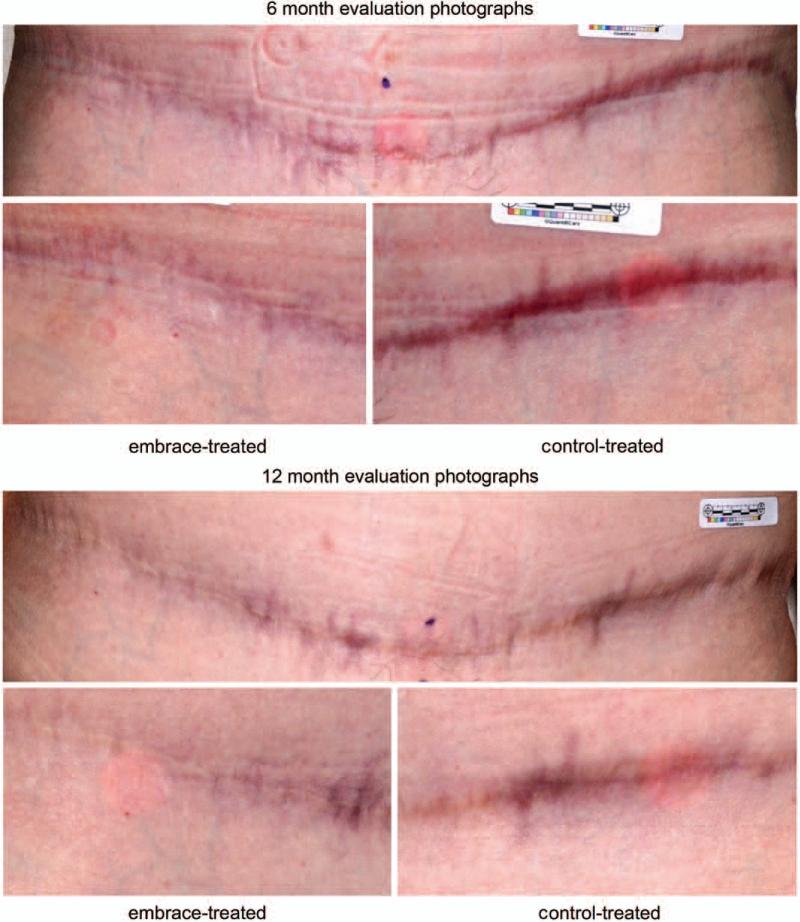Fig. 4.
Photographic evaluation. (Above and second row) Patient at 6 months after abdominoplasty surgery. (Above) Entire view of abdominoplasty scar. (Second row, left) The embrace-treated side and (second row, right) the control-treated side. The mean visual analogue scale scores for treated and control incisions were 4.52 and 5.90, respectively. Overall subject Patient and Observer Scar Assessment Scale scores were 10 for the treated and 10 for the control incision. Overall investigator Patient and Observer Scar Assessment Scale scores were 2 for the treated and 4 for the control incision. (Third row and below) Patient at 12 months after abdominoplasty surgery. (Third row) Entire view of abdominoplasty scar. (Below, left) The embrace-treated side and (below, right) the control-treated side. The mean visual analogue scale scores for treated and control incisions were 2.53 and 4.40, respectively. Overall subject Patient and Observer Scar Assessment Scale scores were 4 for the treated and 10 for the control incision. Overall investigator Patient and Observer Scar Assessment Scale scores were 1 for the treated and 4 for the control incision.

